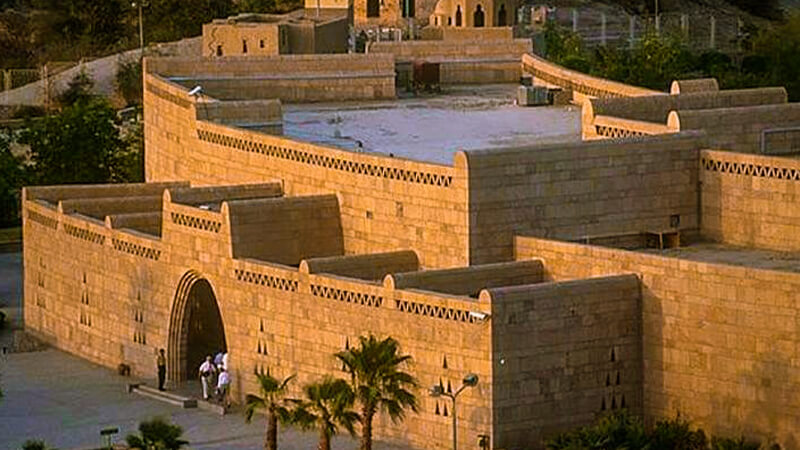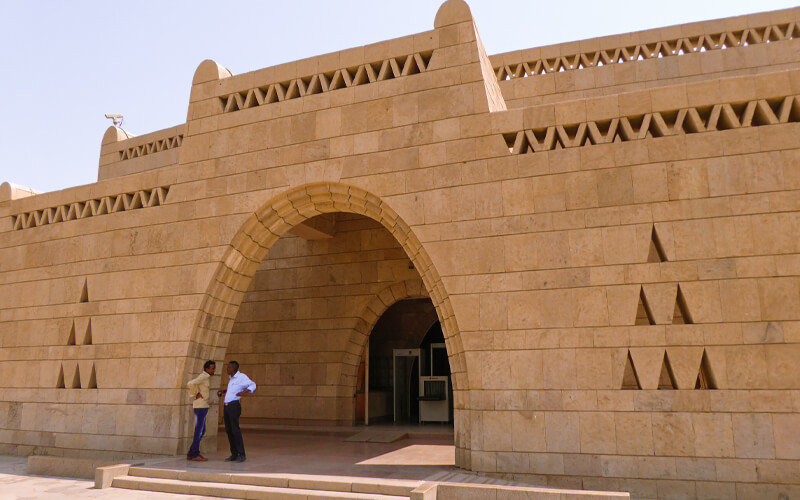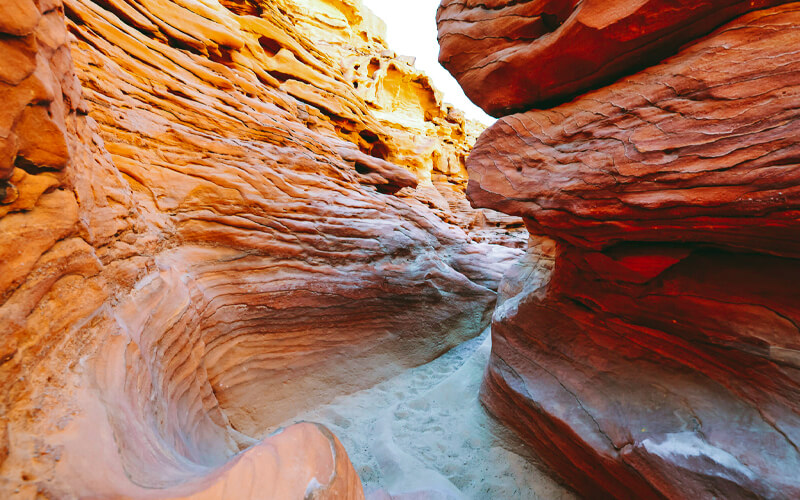The Nubian Museum
The Nubian Museum is a tardy but fitting homage to the contributions that the inhabitants of Nubia made to Egypt’s history. In 1997, the museum began welcoming visitors. Formerly, the region that is now southern Egypt and northern Sudan was home to thriving civilizations that go back thousands of years along the Nile.
More than 100,000 people had to evacuate to neighboring places due to the High Dam’s construction almost submerging the old Nubian capital. The museum’s Nubia-related artifact collection tells the story of the rise of civilization in the southern Nile Valley, from ancient periods through the Pharaonic era, the appearance of Christianity and Islam, and the 1960s dam building. The museum is in Egypt’s Aswan.
If you’re looking to spend a fantastic vacation in Egypt check out our Egypt Excursions with our qualified Egyptologist with the best Egypt travel guide in Egypt.
The History of the Nubian Museum

Amazing top view of Nubian Museum
Since its opening on November 23, 1997, the museum has attracted hundreds of thousands of tourists worldwide from Egypt and other countries. The museum is in one of the most interesting archaeological locations in Aswan. The museum and its Nubian-style architecture, inspired by ancient Egypt’s pharaonic tombs, were given the Aga Khan Award for the Most Beautiful Building in the same year. This award is presented annually to the building considered the most beautiful in the world.
While research and planning for the museum’s construction started in the early 1980s, the idea was not brought to public attention until the late 1990s. During the international effort to save the antiquities of Nubia, the idea of establishing the museum initially came to light, and UNESCO ultimately agreed to support the endeavor. The skeleton remains were found in 1982 in the Kobaniya Valley, located west of Aswan, and the age of the remains has been estimated to be 23,000 years.
Things to see in Nubian Museum

Nubian Painting in Nubian Museum in Aswan
- The main entrance hall, shops, temporary exhibition hall, VIP lounge, and related service areas are on the ground floor. Additionally, there is a 150-seat lecture hall with three translation booths, security, workers’ housing, public restrooms, administrative offices, an amenities area, and lifts for visitors, employees, and utilities. On the first level is a café, a conference room, an office for the administration, a library, and more. For geeks, this is like a fantastic island. The five labs of the restoration studios are located outside the theatre. The lab is home to unique objects, including papyrus, cloth, organic, inorganic, and metal materials.
- The Nubian Museum has around two thousand and five hundred artifacts from the Pharaonic, Coptic, and Islamic periods. A pair of silver bracelets, a bone comb carved with two giraffes, a Paleolithic axe, a Fatimid dynasty (968–1070) children’s outfit, and a painted clay bowl from 6,000 years ago are among the museum’s most cherished assets. A Paleolithic axe, a Fatimid dynasty robe, and a Fatimid axe are among the other remarkable pieces.
- Some antique Nubian sarcophaguses and quartzite figurines are on show on the first floor of the exhibition hall. A vast collection of images and narratives of the attempts to conserve cultural artifacts from damage caused by the building of the Aswan High Dam may be found on the second floor of the exhibition hall.
- Furthermore, the museum has an extensive collection of traditional Nubian handicrafts, such as silver pendants and anklets, resulting from a protracted cultural fusion process. A beautiful garden is also on the museum’s grounds, and around eighty artificial sculptures of ancient Nubian gods and historical rocks are located around the artificial lakes and waterfalls.
- The outside of the Nubian Museum is adorned with eighty-six unique pieces of art, some of which are sculptures and paintings from the museum’s archaeological collection. In addition, the museum has an archaeological display that offers visitors information on the development of Nubia over time, as well as a look into the ancient Nubian culture.
- Workshops and seminars are held in the museum for scientists, archaeologists, and foreign missions stationed in Aswan. In addition to the museum’s collection of antiquities, it also offers these events.
- One of the skulls belonged to a woman diagnosed with breast cancer, and the other belonged to a man diagnosed with brain cancer. These two skulls were among the 300 relics put on display for the first time in the museum’s history as part of a new exhibition showcasing the findings of a mission led by the University of Jaen in Spain.
Check our article about How to choose the best Nile Cruise in Egypt and don’t miss to book one of the Egypt Nile Cruises with us and check our Egypt Vacation Packages.



